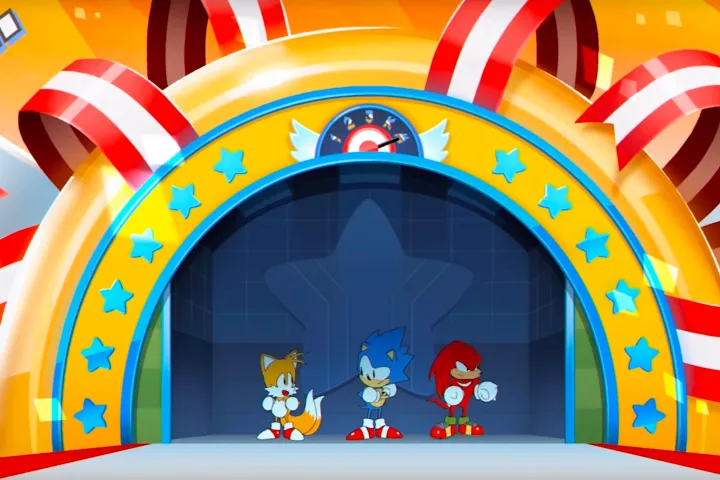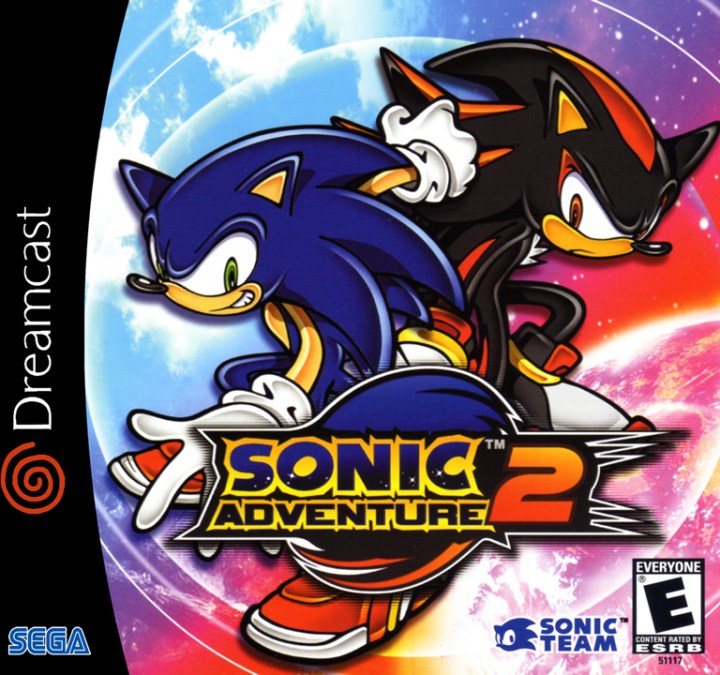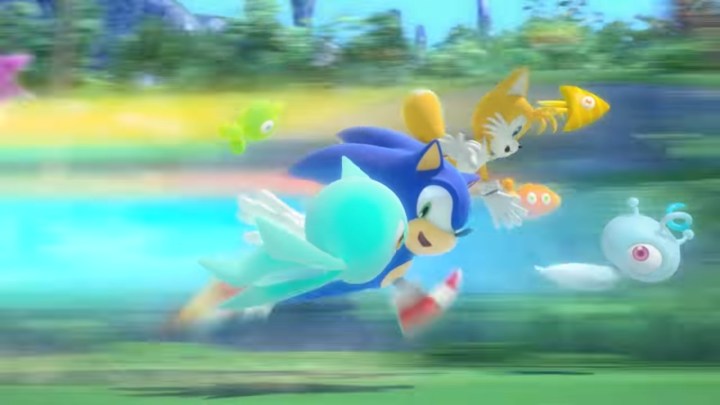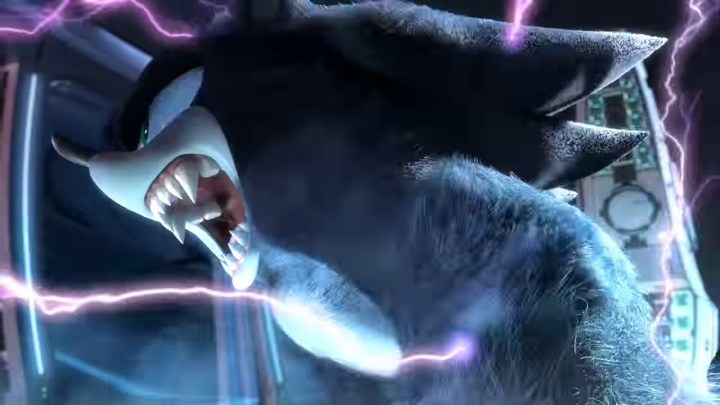It feels like a long forgotten era, but there was once a time when a little blue hedgehog with attitude gave the great Mario a run for his money. Sega, looking to compete in the console space, knew it needed a mascot to compete with Nintendo’s beloved plumber, and thus Sonic the Hedgehog was born. Ever since 1991, the blue blur has been running, spinning, dashing, grinding, and jumping across just about every console to come out. However, Sonic’s legacy is far from spotless. Unlike his Italian rival, this azure marsupial has many, many games that are downright terrible.
- 1. Sonic Mania (PS4, Xbox One, Switch, PC)
- 2. Sonic 3 & Knuckles (Genesis)
- 3. Sonic 2 (Genesis)
- 4. Sonic Generations (PS3, Xbox 360, PC, 3DS)
- 5. Sonic the Hedgehog (Genesis)
- 6. Sonic Spinball (Genesis, Game Gear, Master System, GBA)
- 7. Sonic Adventure 2 (Dreamcast, GameCube, PS3, Xbox 360, PC)
- 8. Sonic & All-Stars Racing Transformed (PS3, Vita, Xbox 360, Wii, 3DS, PC, IOS)
- 9. Sonic Colors (Wii, DS)
- 10. Sonic Unleashed (PS3, PS2, Xbox 360, Wii)
Sonic may not have quite as extensive a library as Mario, but his list of games across three decades now is far from short. That alone would make it necessary to narrow down his best entries, but when you consider the fact that there are some absolute train wrecks hidden in his catalogue, knowing what to avoid becomes half the battle. Looking back from his debut title all the way up to his latest offering, we’ve compiled a list of the best Sonic games across all genres and platforms.
See more:
1. Sonic Mania (PS4, Xbox One, Switch, PC)

There’s something to be said about the fact that possibly the best Sonic game ever made, certainly the best in several years, wasn’t developed by Sonic Team. Instead, the hit throwback to the classic 2D Sonic titles, Sonic Mania, was developed by a team of fans lead by Christian Whitehead. Released alongside Sonic Forces, Mania managed to completely steal the spotlight from the “bigger” Sonic title of the year because it gave fans exactly what they’ve been asking for: A classic, fast, and polished 2D Sonic experience. Forces, while by no means Sonic’s worst game, again fell victim to Sonic’s troubled history of converting his trademark speed into 3D.
On the surface, Sonic Mania might look like a simple attempt to capitalize on fan’s nostalgia for those original Genesis games, but in truth it is what a true sequel to those games should’ve been. Sure, the game features iconic stages like Lava Reef Zone and Hydrocity Zone, only tweaked and updated for Sonic’s improved mobility and controls. Whitehead and team proved they understand what makes a Sonic game fun, and we can only hope Sega allows them to continue to work on the series in the future.
2. Sonic 3 & Knuckles (Genesis)

The last of the original Genesis trilogy, Sonic 3 & Knuckles was the peak before Sonic’s decline. The games hadn’t yet started to fumble into 3D, and the cast of characters was tight, varied, and had no dead weight. For the first time, but not the last, you were given the choice between multiple playable characters with their own campaigns to run and glide through. You of course had Sonic and Tails’ quest, with Tails now able to fly and swim underwater, but Knuckles offered a completely new take on the Sonic formula by being somewhat slower but with the ability to glide. Packed with secrets, bosses, and addictive special stages, Sonic never looked better.
He never sounded better, either. The series has always had some fantastic music, but the soundtrack in Sonic 3 & Knuckles really showed off how good the Genesis’ sound capabilities were. The story managed to be compelling despite no words being spoken, and it was almost endlessly replayable thanks to impeccable level design. All the stages, new and old, hold up to this day as examples of how a Sonic game should feel: Fast. Even when you fail to perform an action, you simply are routed through a different part of the stage rather than brought to a screeching halt.
3. Sonic 2 (Genesis)

There are plenty of people willing to debate which is better between Sonic 2 and the sequel we covered above. We find the extra characters in 3 make it just a bit better than Sonic 2, but there’s really not a major gap in quality between these two classic titles. As a sequel, this game is one of the best around. It took the formula that the original Sonic the Hedgehog essentially invented and almost immediately mastered it just a year later. This is the game where many of the series most iconic levels come from, like Chemical Plant Zone, and they’re memorable for a reason. Like in Sonic 3, they reward good play but are not overly punishing to mistakes. Plus, we have Sonic 2 to thank for introducing the character of Tails and the totally not a Dragon Ball Z ripoff Super Sonic.
Now, Sonic 2 isn’t without some faults. The special stages in particular are often cited as being just not fun, but that is a matter of taste more than anything else. In almost all other aspects, though, Sonic 2 really is as good as most people claim it to be. The original put the blue hedgehog on the map as a potential rival for Mario, but the sequel made a serious case that he just might have what it takes to actually dethrone the mustachioed hero. History would ultimately go a different direction, but Sonic 2 remains a masterclass of a game … just as long as you don’t get too stressed out from that drowning music.
4. Sonic Generations (PS3, Xbox 360, PC, 3DS)

We haven’t been exactly vague about which Sonic games tend to be the worst. Once games went 3D, Sonic just couldn’t keep up, and they even lost what made his old 2D games great in the process. That was, with a few exceptions, true until Sonic Generations came out. This was one of the first times a Sonic game split itself between classic levels, only now presented in 2.5D, and the new 3D style. Old Sonic would take the lead in classic levels, utilizing his old moveset, while modern Sonic kept pushing spectacle via high speed and dynamic set pieces with a third-person camera perspective.
Thankfully the game does focus more on 2D-style gameplay, which is where Sonic has always felt the most responsive and satisfying. The physics are just right, even for 3D Sonic, and the level designs harken back to the Genesis games, where there are plenty of routes to take and new things to discover. On one hand, it is a great example of how Sonic can still be relevant in the modern era, but it also highlights how the 3D efforts still aren’t able to match the feel or balance of his 2D offerings.
5. Sonic the Hedgehog (Genesis)

You could argue that it doesn’t reflect well on Sonic that his first game remains one of his best, but in reality it just proves how good his gameplay was before getting bogged down or meddled with in future iterations. Sometimes simplicity is king, and Sonic the Hedgehog is the formula at the most pure form. It’s just one blue hedgehog trying to save the world from an evil scientist by running and jumping on his robotic minions, collecting rings, fighting bosses, all while rocking out to a great soundtrack. Aside from the spin dash, there’s nothing to miss in terms of gameplay.
Blast processing may have ended up being a marketing gimmick, but at the time it didn’t feel like it. Compared to games on the NES, Sonic felt like a rocket ship blasting across stages almost too fast to react to what was coming. But that wasn’t all the game had going for it. Stages like Green Hill Zone are some of the most iconic in all of gaming, second only to Mario’s world 1-1. Sonic was also heavily marketed as having “attitude” and using only animations managed to convey that early ’90s cool aura. While the schtick is a little dated now, it was a major point in the little guy’s favor.
6. Sonic Spinball (Genesis, Game Gear, Master System, GBA)

The point of a mascot character is to slot them into as many genres as possible to increase a game’s appeal. How many of us only played tennis or golf games because they had Mario characters in them, after all? One of Sonic’s first diversions from his original genre was surprising not just because it was a pinball game, but also because it was actually a really good one. Sonic Spinball capitalizes on Sonic’s iconic spin move, where he essentially becomes a ball, and drops him into various pinball stages where he is bounced around and slammed against Eggman’s robots. It was, and still is, an odd choice, and it doesn’t quite land in every way, but was a fun diversion from the main series.
The game runs a little slow, which is a major problem for both a Sonic game and a pinball game. The controls are also not quite responsive enough, leading to some frustrating deaths for a lot of players, but the real downside to the game is how little content there is. There are only four levels in the game, with one boss at the end of each, plus a repeated bonus stage. The game isn’t all pinball, though, and you can control Sonic like you would in a normal 2D platformer for some variety. The only difference is that Sonic doesn’t use rings as life and is only able to die if he falls off the stage, which makes sense for a pinball game.
7. Sonic Adventure 2 (Dreamcast, GameCube, PS3, Xbox 360, PC)

The first fully 3D entry on this list does come with plenty of asterisks attached to it. Is it the best 3D Sonic game? Well, that depends on what you look for in a Sonic game. If gameplay is king for you — and we assume that’s true for most people — then Sonic Adventure 2 might be the best option. Of all the prior attempts to figure out how to translate Sonic’s speed into 3D, especially how the camera should work, this game manages to hold together very well under the strain. Unlike Sonic Adventure, the sequel is also far less cryptic in terms of how to progress thanks to it ditching the confusing hub world — though the story, cutscene direction, and voice acting are still at that “so bad it’s good” level of quality.
The gameplay is divided once again into three styles of game between the campaigns. Sonic and Shadow handle the high-speed spectacle stages you come to Sonic games for, while Tails and Eggman give a surprisingly fun mech mode, and Knuckles and Rouge return with the mostly tedious treasure hunting stages. Gone is the abomination that was Big the Cat’s fishing levels! That alone is enough to praise this sequel. Toss in an updated, improved, and quite addicting Chao garden, and you have a solid package all around.
8. Sonic & All-Stars Racing Transformed (PS3, Vita, Xbox 360, Wii, 3DS, PC, IOS)

When it became clear that Sonic fell short of his goal to dethrone Mario as the king of platformers, 2D or 3D, the team’s next effort was to go after the kart racing genre. This was a tall order since Mario has dominated that space even more convincingly than platformers, plus there was the natural skepticism of putting Sonic, known for running, into a car to race. However, the creativity, polish, and outright fun they managed to cram into the unfortunately titled Sonic & All-Stars Racing Transformed convinced those who played it that it wasn’t just a knockoff Mario Kart game, but maybe even a superior one.
Long before Mario Kart 8, this Sonic racer created tracks that had the player’s kart, like the title suggests, transform between a standard car, plane, and boat seamlessly. Even Mario only dabbled in these ideas with gliders and underwater sections, but Sonic gave you three unique and fully developed styles of racing in one satisfying package. Stages were bright, colorful, imaginatively designed, and all-around fun to blast through. The character roster was also … unique, to say the least. You had the staple Sonic characters, like Shadow, Amy, and Eggman, but also some deep picks, like Vyse from Skies of Arcadia, Pudding from Space Channel 5, Joe Musashi from Shinobi, and real-life racer Danica Patrick.
9. Sonic Colors (Wii, DS)

Somewhat of a mechanical prequel to what Generations would be, Sonic Colors was the first breath of fresh air for many Sonic fans in years. It was the first true attempt at splitting a game up with both 2D and 3D stages, but with the added gimmick of wisps. Unlike most of Sonic’s gimmicks, these colorful creatures actually worked to enhance the gameplay instead of complicating or watering down what everyone wants from a Sonic game. The focus is still firmly on your ability to run fast, collect rings, and bounce off obstacles. The wisps just grant you little extra abilities — more like power-ups than anything else — such as allowing you to float, swim like a shark, or roll up walls with your spikes.
The game is a bit short, however. There are six worlds, and all of them are diverse and well designed but can be completed a little too fast to feel like you even hit top gear. Thankfully, the game retains the ranking system to encourage you to replay stages for the best possible score and time as well as seek out the various pathways each stage has. Just don’t bother with the extra co-op mode. It is like a worse version of any Mario game with co-op, where you’re constantly bumping into or bouncing off of each other, but worse because of the emphasis on speed. If one of you gets too far ahead and pushes the other off the screen, that’s it for them.
10. Sonic Unleashed (PS3, PS2, Xbox 360, Wii)

Sonic Unleashed is almost a perfect metaphor for itself. Sonic has become part werehog (because why not) and will transform every night into the burly beast while remaining his sleek, seedy self during the day. That 50/50 split almost perfectly reflects how much of this game is good. Nearly all the daytime stages, which feature classic Sonic gameplay of rushing across beautiful vistas at some of the fastest speeds we’ve ever seen, are considered good if not great great by most fans. Just the scale of some stages make you feel like you’re actually racing across huge regions of the world. They may even be some of the best 3D Sonic levels of all time. But you can’t just play the day stages alone, and eventually the ugly werehog will rear its head.
As if developed by another team that didn’t want to make a Sonic game at all, the night stages are slow, action focused, combo based, God of War style gauntlets with RPG leveling elements. If that doesn’t sound like the type of thing you’d be doing in a series with the tagline “gotta go fast,” then you’re right. These stages just don’t work. Even if you liked that style of gameplay, it just isn’t satisfying in Unleashed, nor does it run well. The framerate just can’t handle these sections, snatching away what little hope this style of gameplay had of at least being passable. In the end, we got half a good-to-great Sonic game and half a monstrosity.



